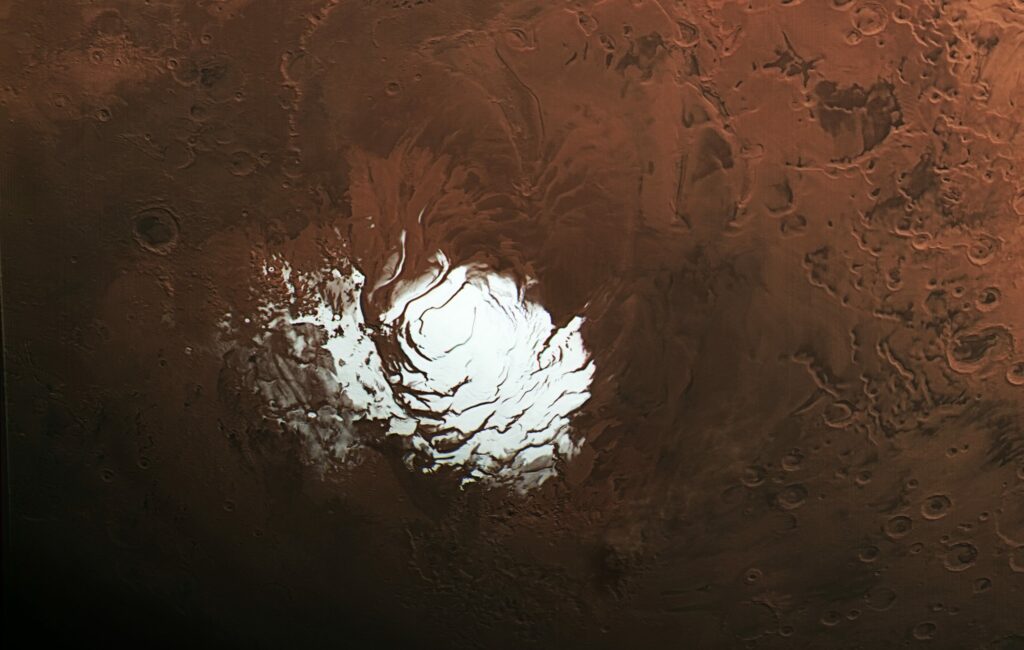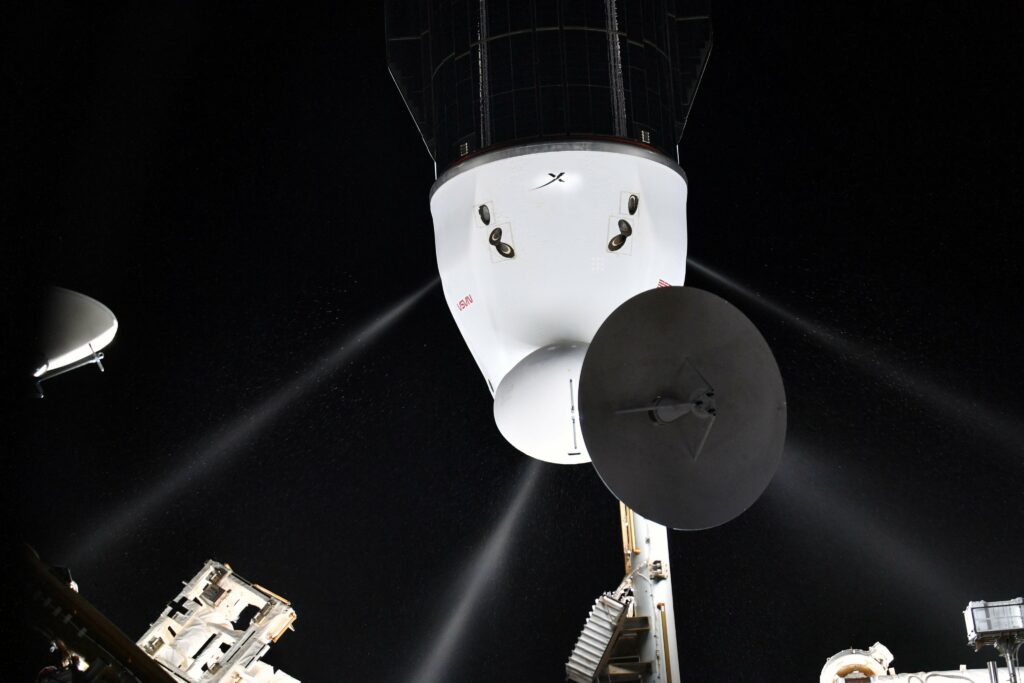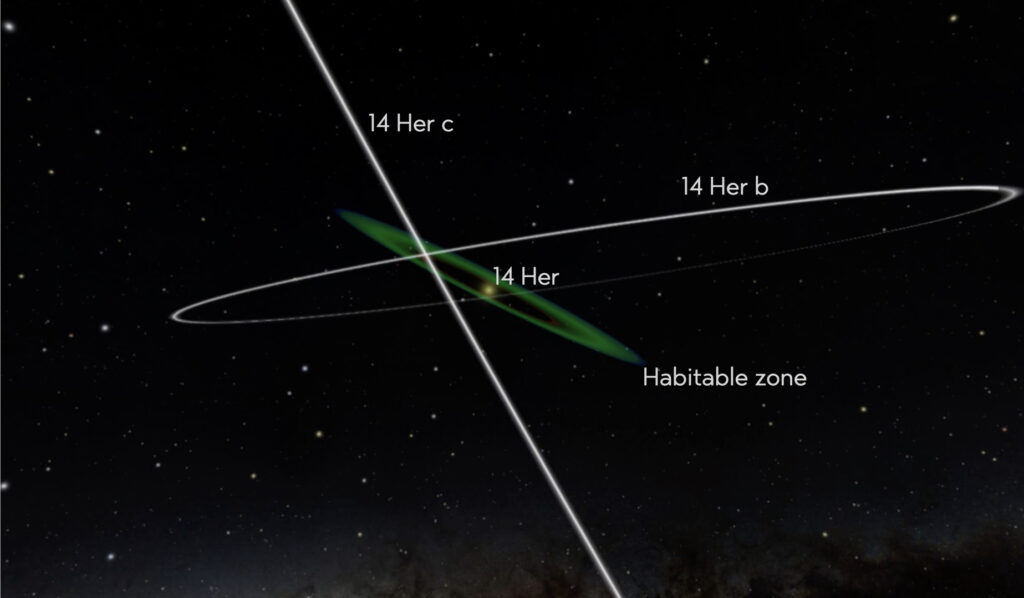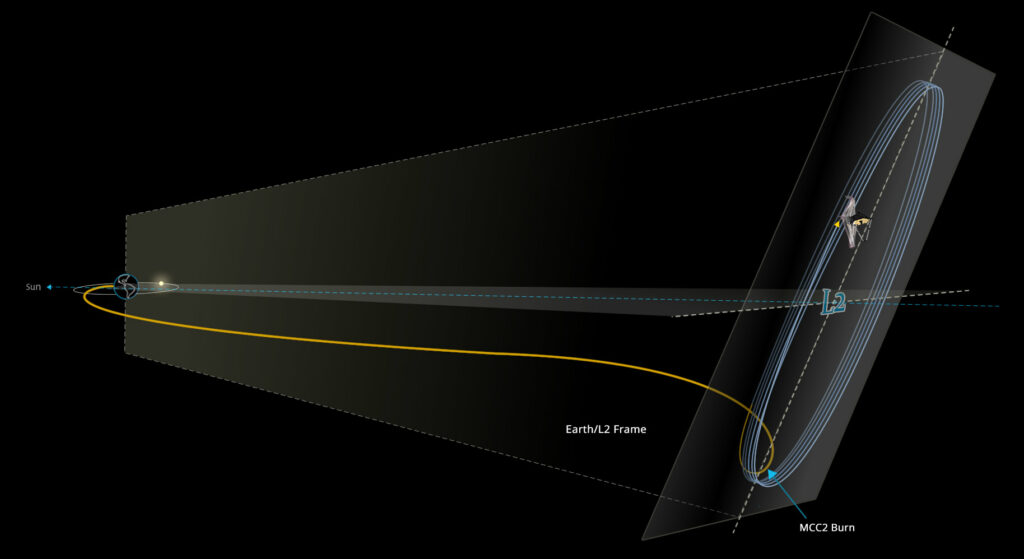Podcast
Show Notes
Get them while they’re cold: Ice Pancakes
Mars groundwater is a no show
- AGU press release
- UTA press release
- “The Basal Detectability of an Ice-Covered Mars by MARSIS,” C. Grima, J. Mouginot, W. Kofman, A. Hérique, and P. Beck, 2022 January 24, Geophysical Research Letters
Atlas V launches 2 satellites for Space Force
- ULA press release
- Launch video
SpaceX Cargo Dragon return Science for NASA
- NASA press release
- SpaceX CRS-24 Mission Overview (NASA)
The 14 Herculis system: Eccentric, strange, and violent
- BDNYC press release
- “14 Her: a likely case of planet-planet scattering,” Daniella C. Bardalez Gagliuffi et al., 2021 December 3, The Astrophysical Journal Letters
- Visualization video
JWST reaches L2 halo orbit position
Transcript
Hello and welcome to the Daily Space. I am your host Dr. Pamela Gay.
And I am your host Beth Johnson.
And we’re here to put science in your brain.
Today, we’ll look at a dynamical analysis of the 14 Herculis system that has revealed the existence of two brown dwarf planets orbiting in completely misaligned, eccentric orbits. The study also uncovered the possibility of a third brown dwarf that was ejected from the system. Plus, weird ice in Chicago, the ongoing debate about liquid water on Mars, one rocket goes up while a capsule comes down, and we interview Dr. Knicole Colón from the JWST mission.

We have hit that part of winter where the Sun is rising a little later every day, but for many of us, bright blue skies come with the coldest days of the year. It is, in fact, so cold that folks in Chicago are seeing a rare phenomenon out on Lake Michigan: ice pancakes.
These round disks of slushy ice form when restless water starts to freeze, but wave motion causes the ice to constantly break and the pieces to collide. Ultimately, like rocks in a river, the crashing ice chunks become rounded. Slight lips form around their edges, where material builds up during collisions and water splashes up and freezes.
While ice pancakes are rare on the great lakes, they can be found much more often in Antarctica or the Baltic Sea.
Now, before you think about wading out to load up a plate with icy goodness, we have to warn you that these disks are more slush than ice and will completely fall apart unless your spatula is big enough to support their entire 8-in to several-foot wide diameter. So, get your biggest spatula, a frozen plate, and head out to the Windy City to get some ice pancakes today. This ice phenomenon may be gone tomorrow.
Just to add to that last story, I feel I need to say, you shouldn’t eat or drink anything that comes out of the Great Lakes unless local authorities have indicated it is safe. Just don’t.

While the cold weather pushes through my part of the midwest, I’m reminded of the landing of the Mars Exploration Rover Opportunity back in 2004. That day it was warmer on Mars where Opportunity landed than it was where I worked in the city of Boston. I was envious of that warm rover and became very close friends with its distant cousin, my electric space heater.
While we think of Mars as a sub-freezing desert, the truth is summertime temperatures can soar into the 70s. It’s not the temperatures that prevent water from flowing on the red planet; it is the lack of atmosphere. Without the push back of air, water molecules will happily go from frozen ice to humidity raising gas in a single step called sublimation.
Scientists held out hope, however, that groundwater could still exist beneath the surface. Not ice; water. In 2018, this hope was thought to be confirmed as reality when radar returns showed a region of high reflectivity under Mars’s ice-covered south pole. In general, radar reflects extremely well off water, and we know that sub-glacial conditions can allow liquid water here on Earth, but sometimes when you see smoke, there is just a smoke machine and no actual fire.
In this case, the strong radar returns came from a region that detailed calculations said probably shouldn’t actually have water. Mars isn’t Earth, and what makes sense here, doesn’t apply there. When a different team of researchers simulated what other regions of Mars would look like in radar if covered in ice, they realized that volcanic plains, with their solidified iron-rich lava, can reflect in ways that look just like what was seen at the south pole.
This research was led by Cyril Grima and appears in Geophysical Research Letters. Grima’s colleague Isaac Smith reminds us: Science isn’t foolproof on the first try. That’s especially true in planetary science where we’re looking at places no one’s ever visited and relying on instruments that sense everything remotely.
Space is hard, but it is really amazing that while we can’t yet explore Mars in person, we can explore it with robots, radar, and so much more thanks to rockets.
And speaking of rockets, next up Erik Madaus brings us the latest on one rocket that went up and one capsule that came down. Take it away, Erik.

Thanks, Pamela. On January 21 at 19:00 UTC, a United Launch Alliance Atlas 5 launched the USSF-8 mission for the U.S. Space Force.
USSF-8 debuted a new variant of the Atlas 5, the 511. This version has a five-meter fairing, only one solid rocket booster, and one engine on the Centaur upper stage. The single solid rocket booster is possible because the nozzle is angled through the average center of mass of the rocket, and the RD-180 main engine has a large gimbal range to compensate for the offset thrust. The 511 variant has always been available, but until now, no payload has needed it.
USSF-8 included two GSSAP or Geosynchronous Space Situational Awareness Program satellites. Not much is known about the two satellites except that they will monitor objects, including active satellites and space debris, in geostationary orbit. USSF-8 included the fifth and sixth GSSAP satellites. The first four were launched on now-retired Delta IV Medium rockets.

Also in rocket news, SpaceX’s uncrewed CRS-24 Cargo Dragon successfully returned to Earth yesterday, January 24, at 21:06 UTC. The spacecraft had undocked from the International Space Station the previous morning. It returned to the Gulf Coast, landing off the coast of Panama City, Florida.
CRS-24 brought back with it some old hardware for refurbishment on Earth, including parts of the station’s life support system and a microscope that had been on the station since 2009. The Dragon also brought back science results for analysis, from the InSPACE-4 and Cytoskeleton experiments.
From our solar system and its fascinating science and engineering, we now wander off to a distant star system with a violent past – 14 Herculis.
Researchers at the American Museum of Natural History led a study of this particular system, nearly 60 light-years away from our own, because it has an almost Sun-like star and is relatively nearby. It’s been studied for over two decades. But new data from ESA’s Gaia telescope combined with existing data from their Hipparcos mission provided evidence for a significant amount of acceleration in the motion of the star. The time difference between the two measurements was about 24 years, and the motions of the star differed by 31 sigma. That simply means that the star’s motion is being perturbed by some type of unseen mass. Co-author Dr. Jackie Faherty notes: Finding that a star is accelerating when it has a planet is a big red flag that there is science to be uncovered.
So the team dug through all the literature they could find on this star and managed to gather twenty years of radial velocity data. Using open-source code called ‘orvara’, they combined all the measurements and managed to create a detailed architectural picture of the entire system.

And they found two planets, brown dwarfs, with the mass of nine Jupiters and seven Jupiters. They are located 2.8 AU and 27 AU from 14 Herculis, respectively, but their orbits. Oh, their orbits are what makes this story so very interesting. The orbits are very eccentric, and that’s fine. But they are also incredibly misaligned. Lead author Daniella Bardalez Gagliuffi explains: If you were to look at these two planets from afar, the orbits would cross each other in an ‘X’ pattern with the star at the center. The 14 Her system looks like the result of a complex game of billiard balls in the sky.
In our solar system, all the major planets are aligned in the same plane, what we call the ecliptic, and that suggests they all formed in that first protoplanetary disk. In 14 Herculis, it seems that the planets were scattered by each other, perturbing their orbits and possibly even ejecting a third, smaller brown dwarf out of the system. Unfortunately, that now free-floating planet would only have been about 250-300K, very cold and very small for a brown dwarf. In other words, already difficult to detect when orbiting a star and now nearly impossible.
However, nearly impossible means there is still a chance, and the Brown Dwarfs in New York City Research Group plans to map all the planetary systems in our neighborhood to try and find more mysteries to solve.
This work was published in the Astrophysical Journal Letters, and there is also a fantastic video created by Deoin Desir using the visualization software OpenSpace. We will have links to the paper and the video in our show notes.

Of course, we would be remiss to not talk about one of the biggest bits of news in space at the moment. On Monday, January 25, at 1900 UTC, the JWST fired its thrusters for almost five minutes to complete the last of its postlaunch course corrections. This particular burn inserted JWST into its halo orbit around the Earth-Sun Lagrange point 2 position, about 1.5 million kilometers from Earth. Now engineers here on Earth will begin the process of aligning all the optics to nearly nanometer precision, which should take about three months.
Interview
Joining us now is Dr. Knicole Colón. Dr. Colón is an Astrophysicist at NASA’s Goddard Space Flight Center and the JWST Deputy Project Scientist for Exoplanet Science. Her research interests include the discovery and characterization of exoplanets, and she’s here today to talk to us about the JWST, its missions, and her own goals in her research using the new telescope.
Thank you for joining us, Dr. Colón, and welcome.
[Transcript unavailable]
It’s been great having you here today, Dr. Colón. Thank you again.
To all of you watching, this conversation ran longer than we can air here on NowMedia. You can catch the interview in its entirety on our website, DailySpace.org
While you’re there, check out our show notes to find more information on all our stories, including images. As always, we’re here thanks to the donations of people like you. If you like our content, please consider joining our Patreon at Patreon.com/CosmoQuestX.
Credits
Written by Pamela Gay, Beth Johnson, and Erik Madaus
Hosted by Pamela Gay, Beth Johnson, and Erik Madaus
Audio and Video Editing by Ally Pelphrey
Content Editing by Beth Johnson
Intro and Outro music by Kevin MacLeod, https://incompetech.com/music/


 We record most shows live, on Twitch. Follow us today to get alerts when we go live.
We record most shows live, on Twitch. Follow us today to get alerts when we go live.